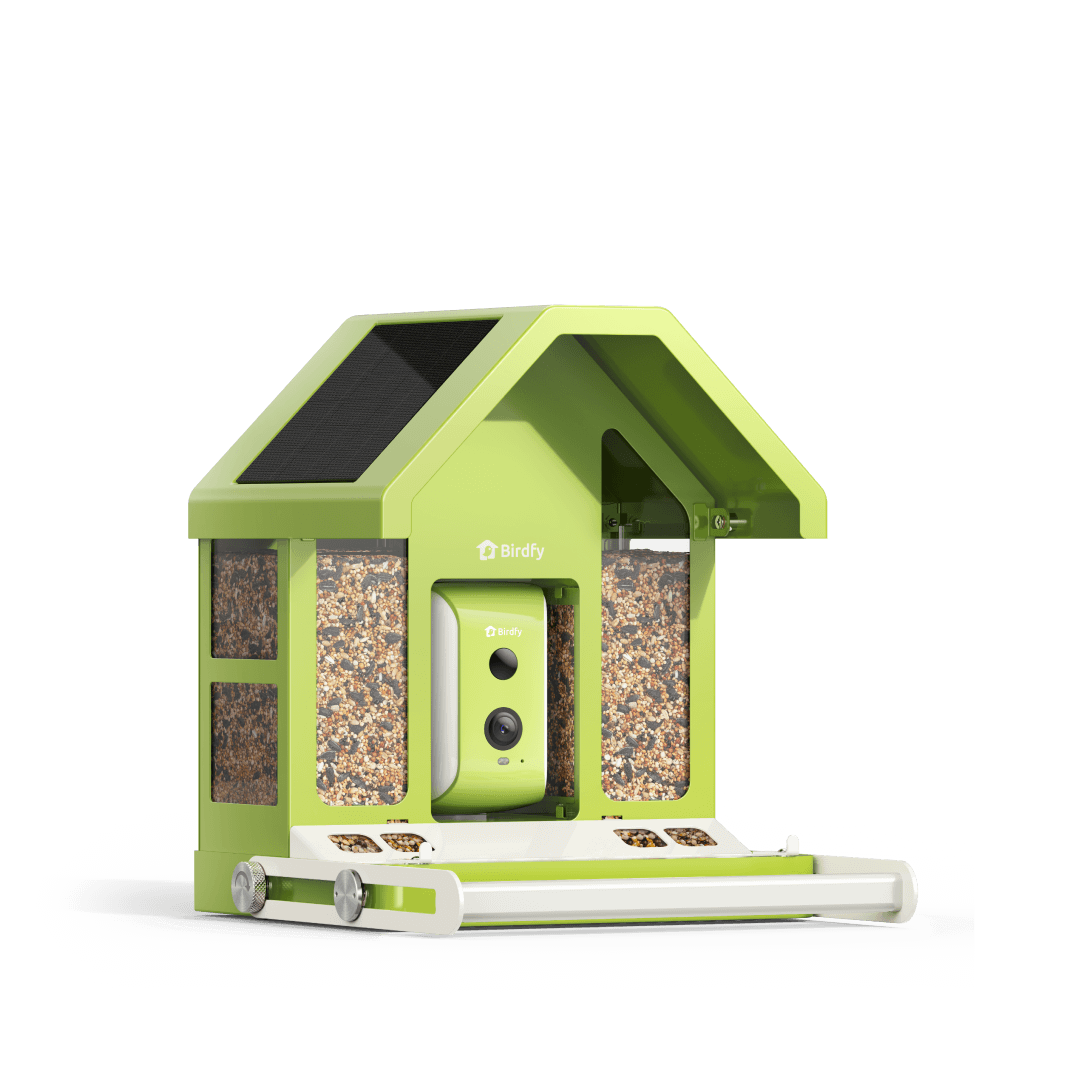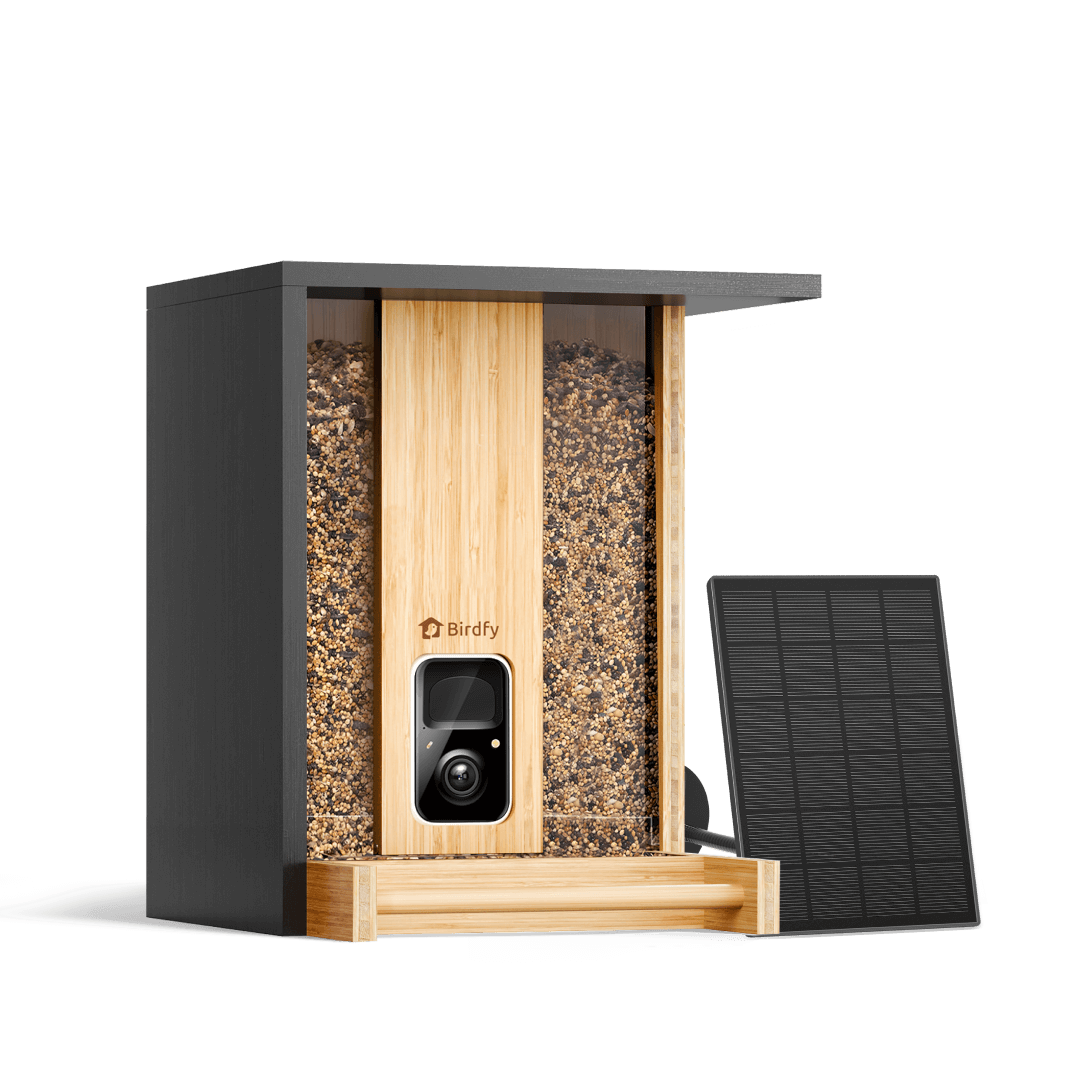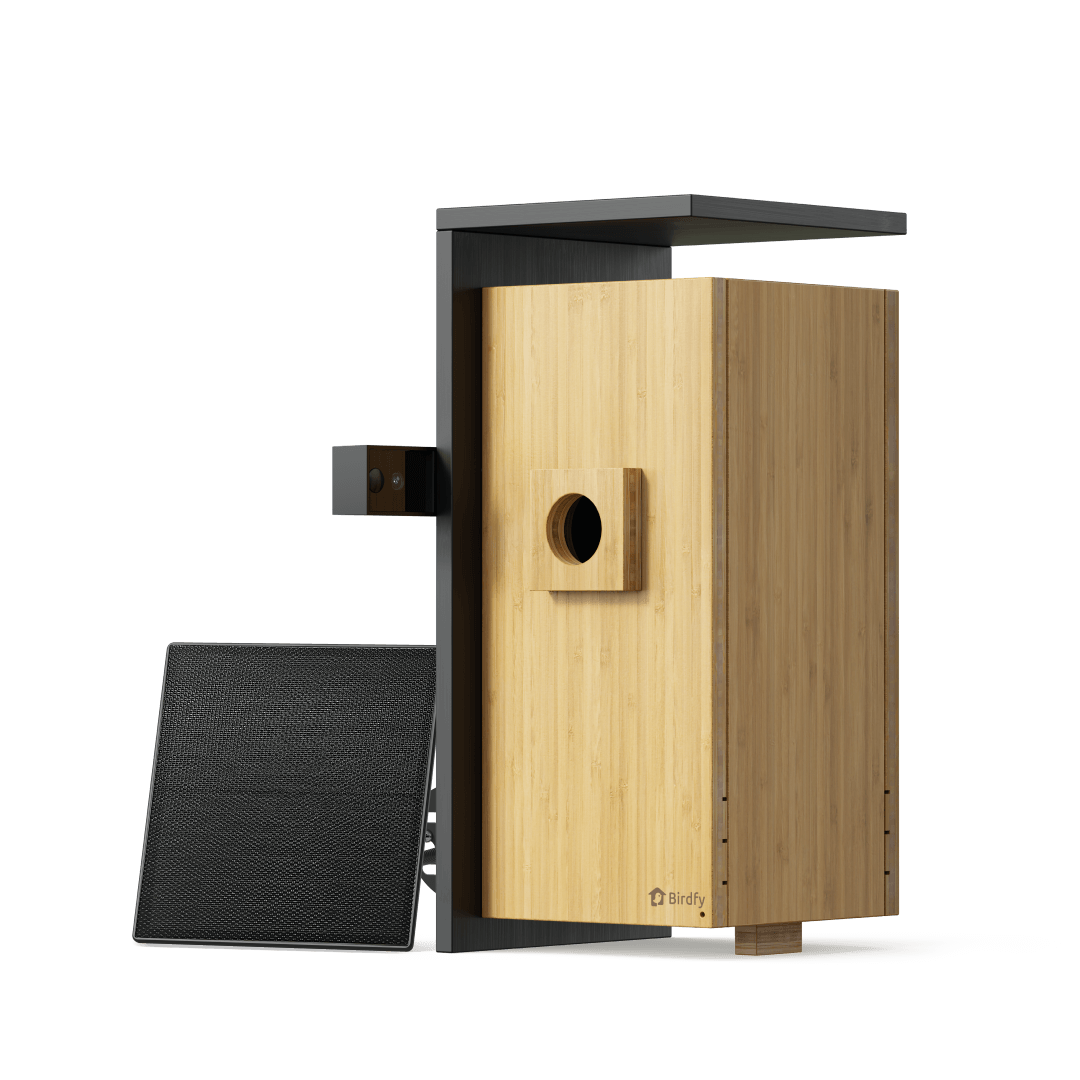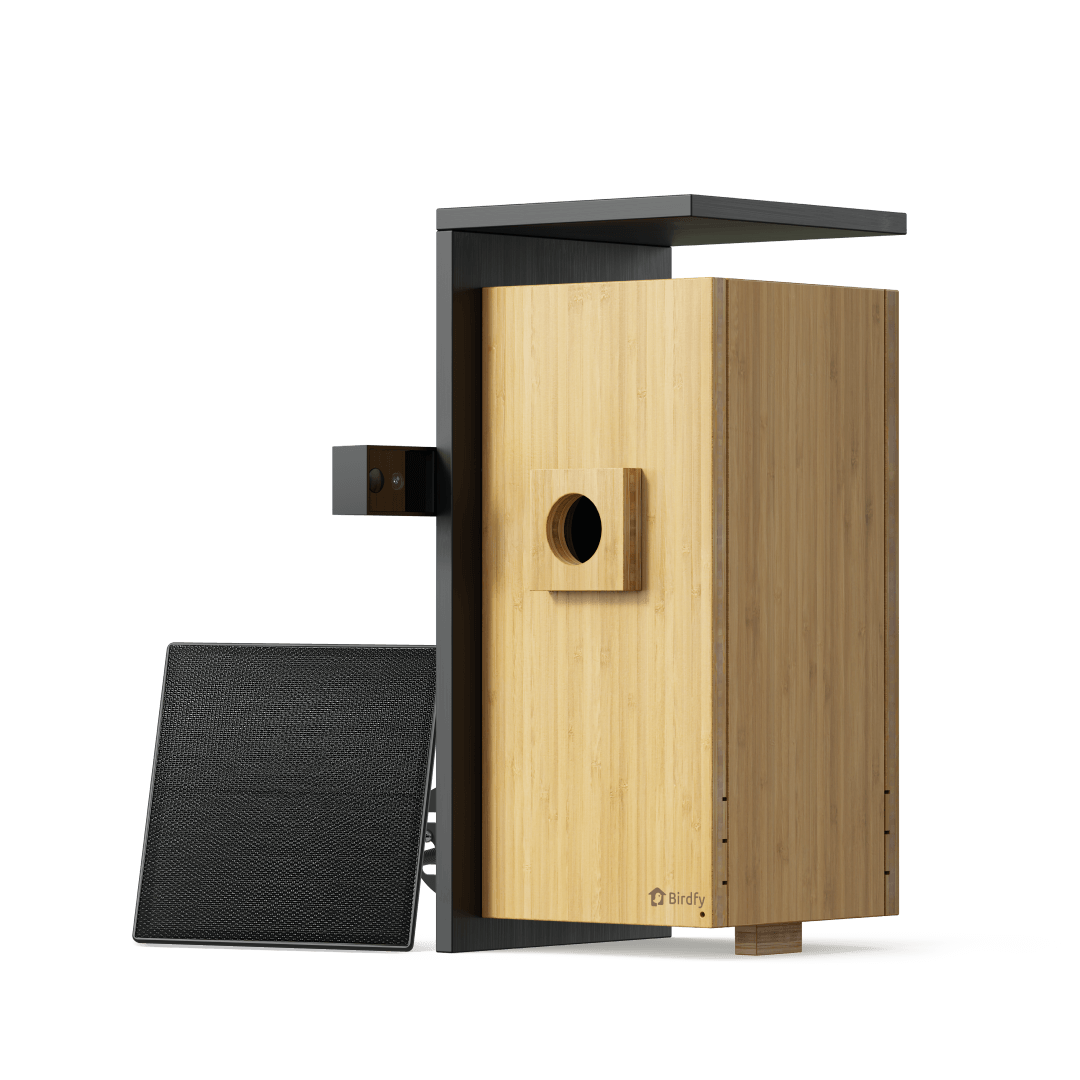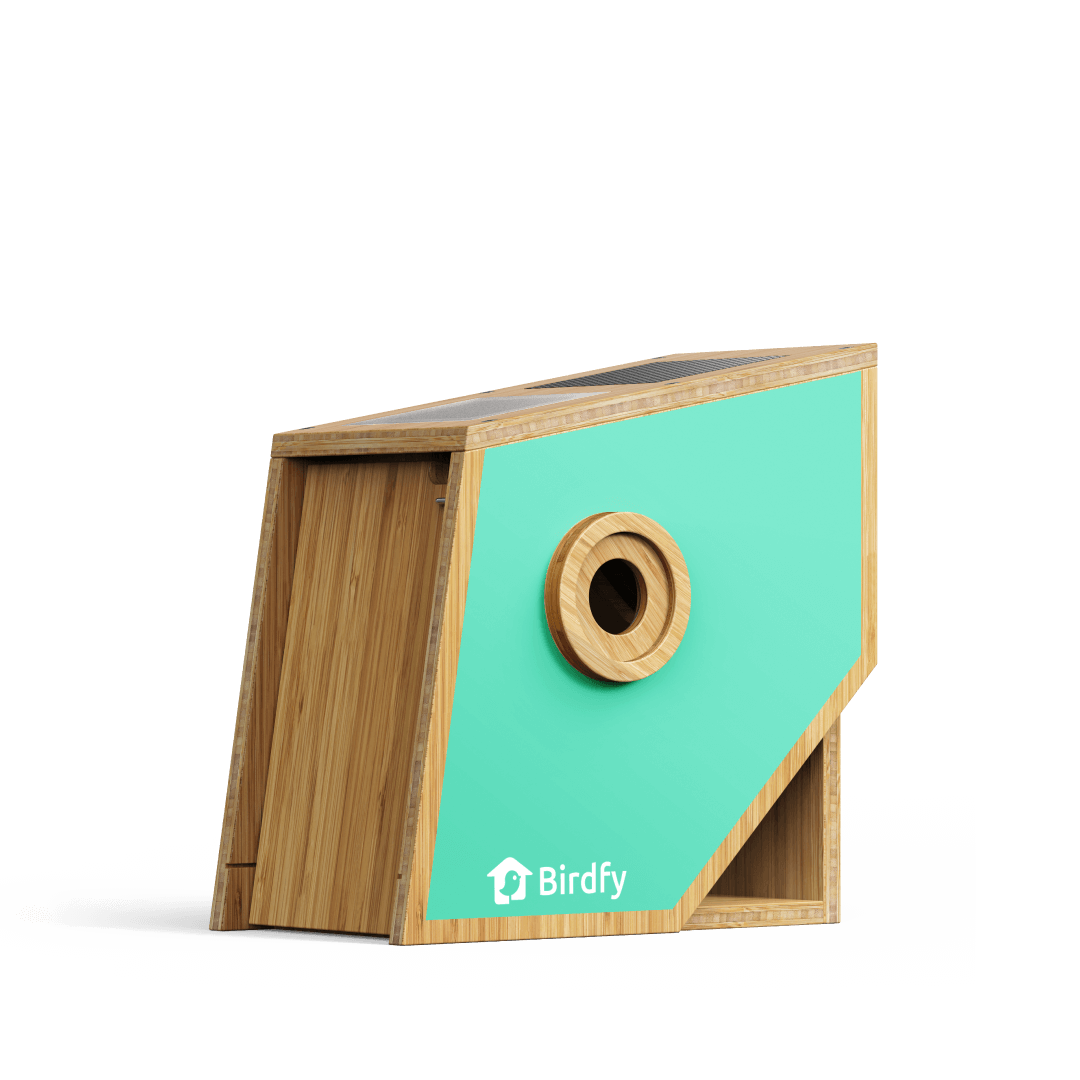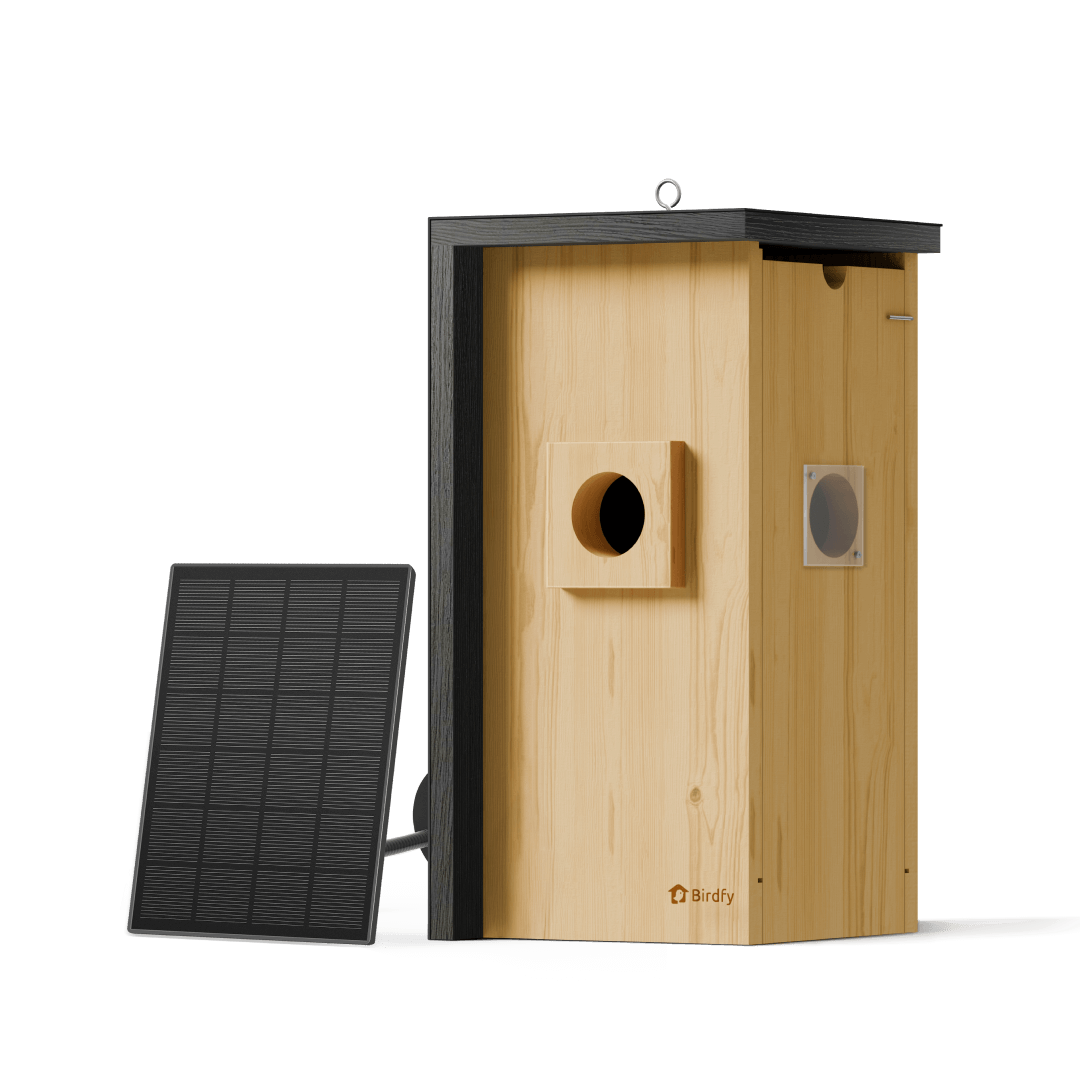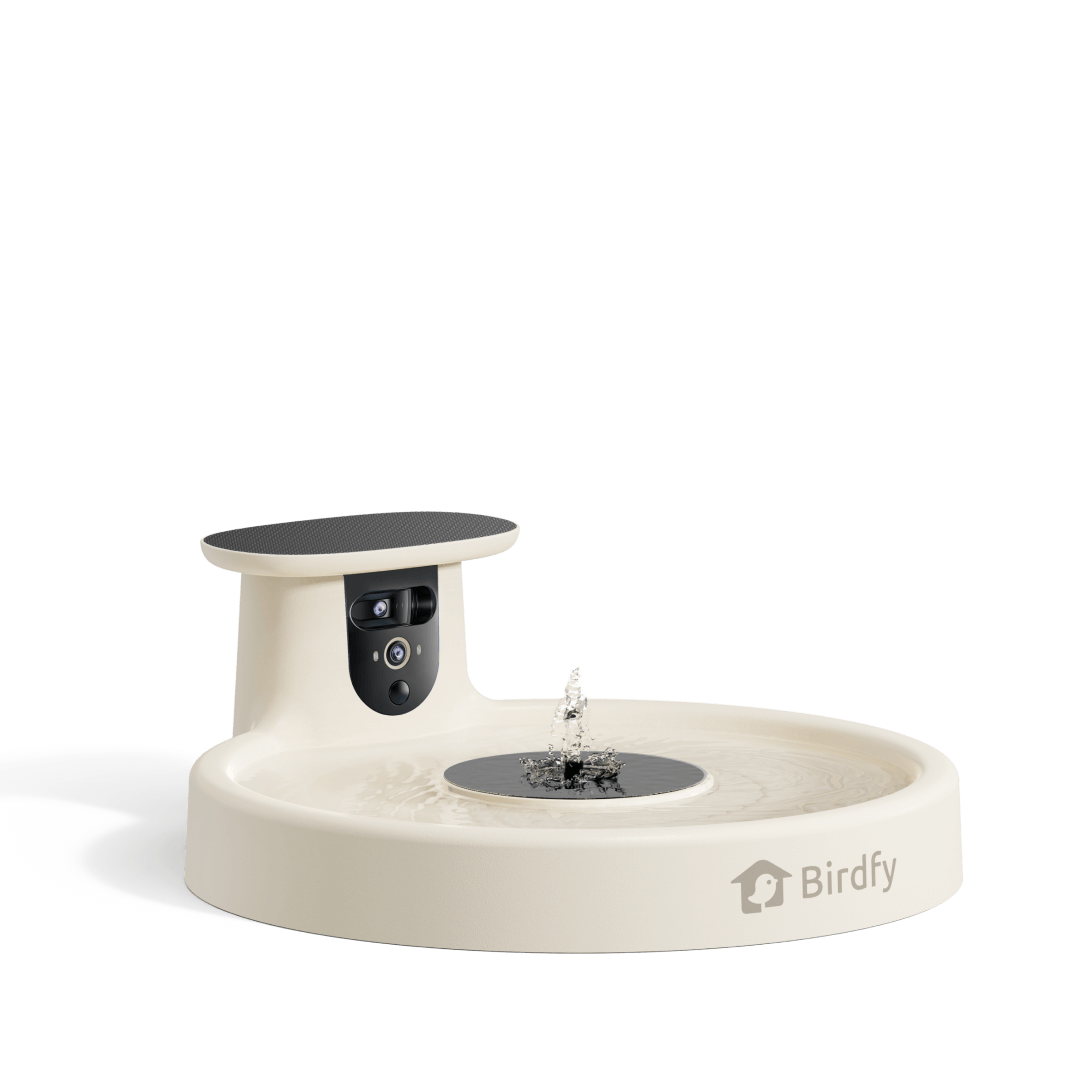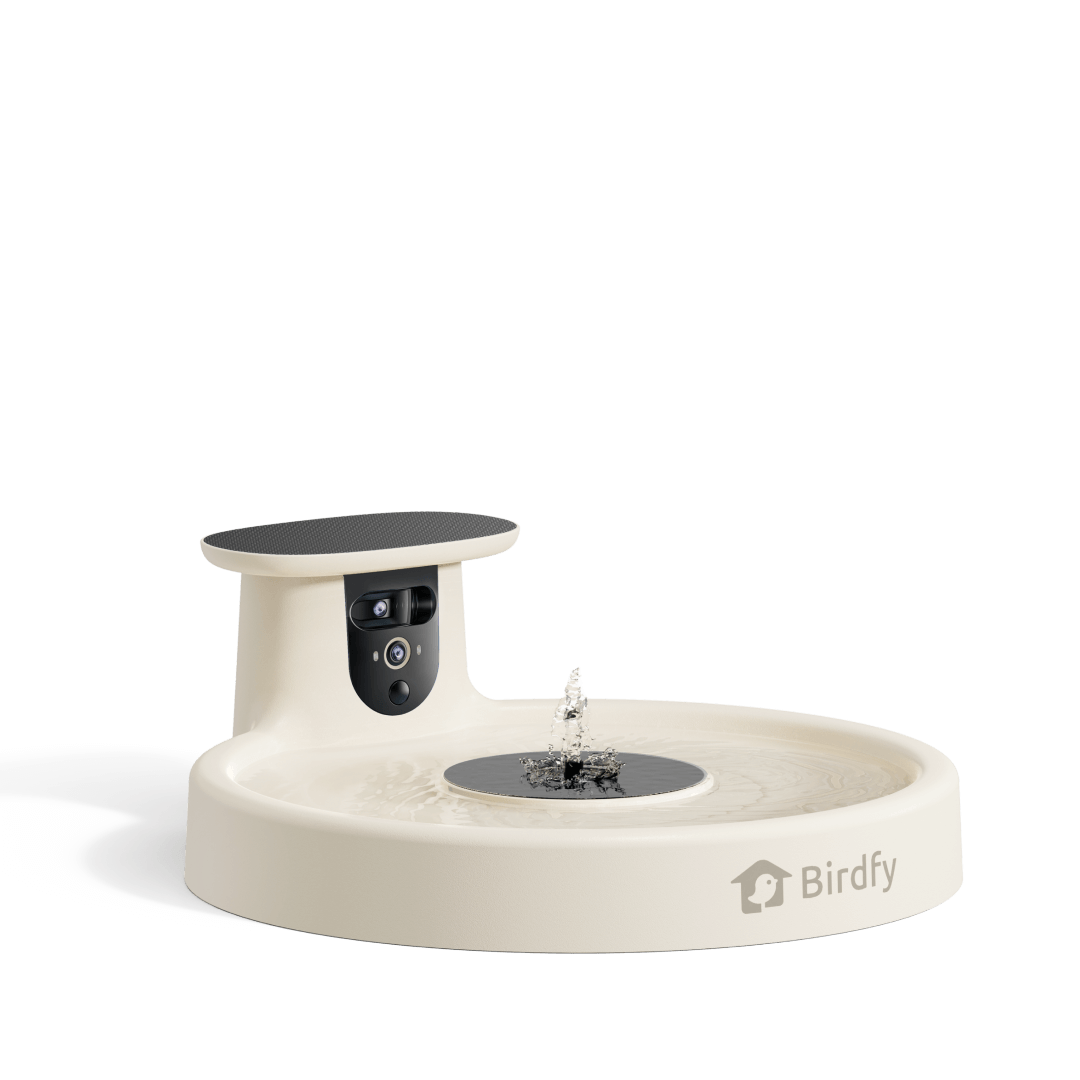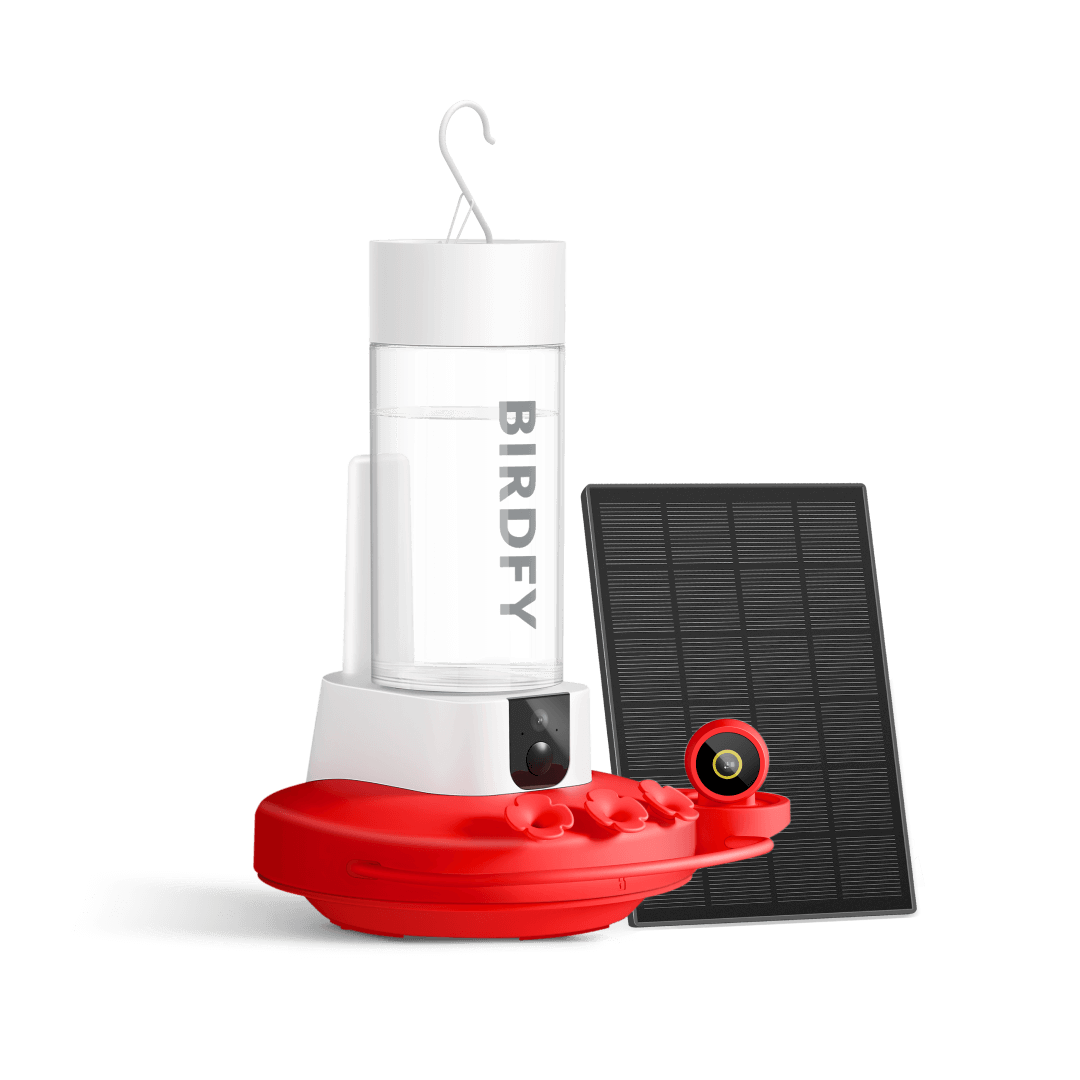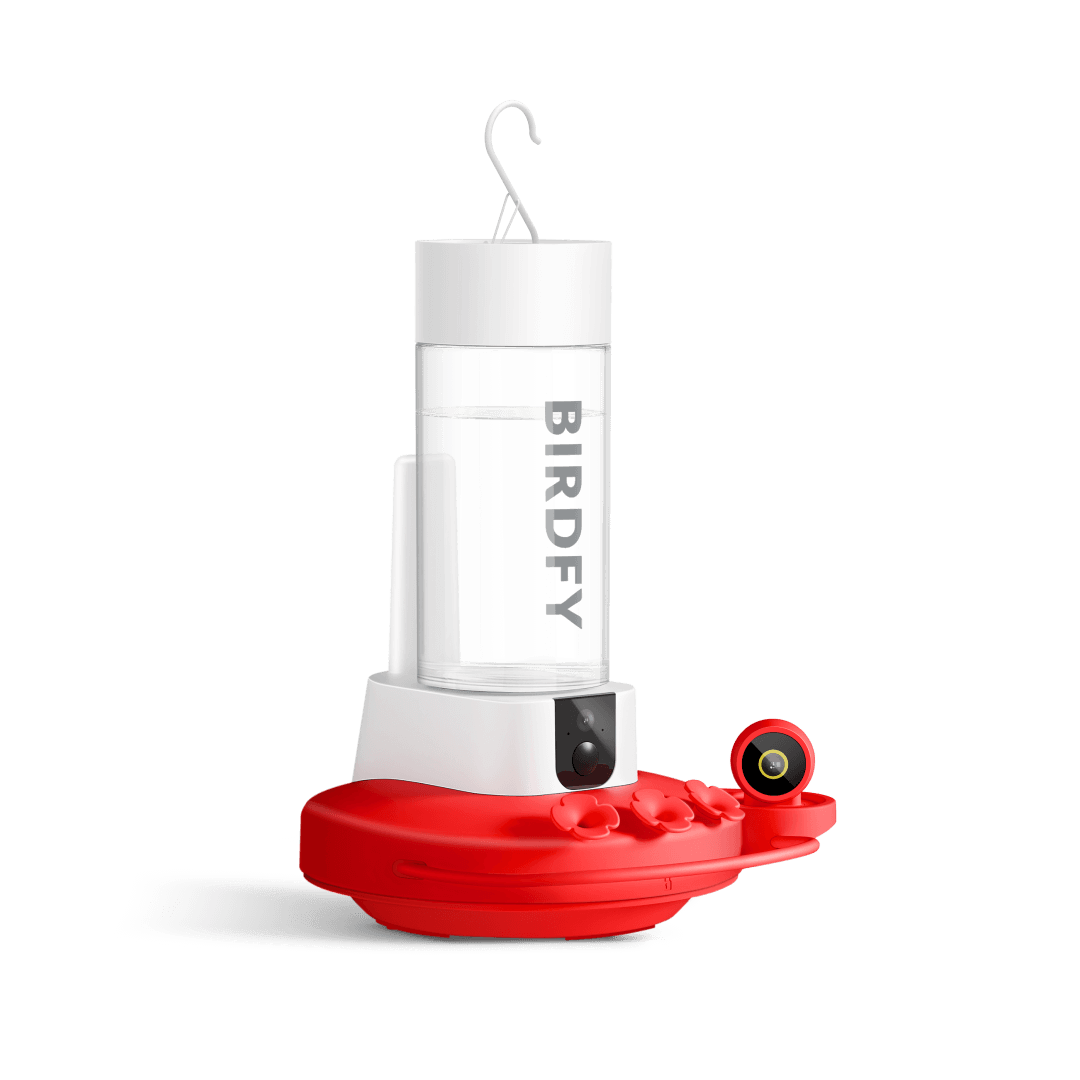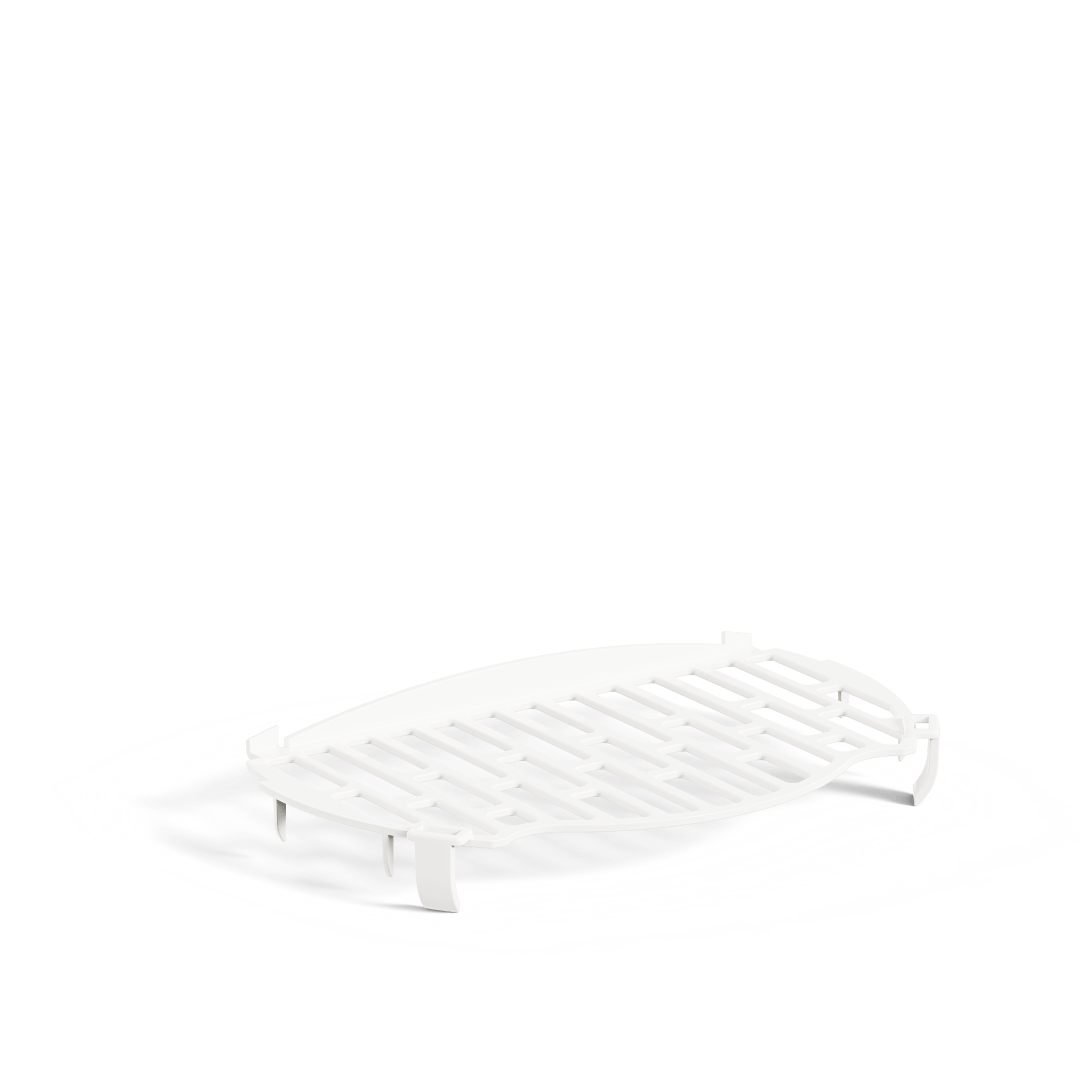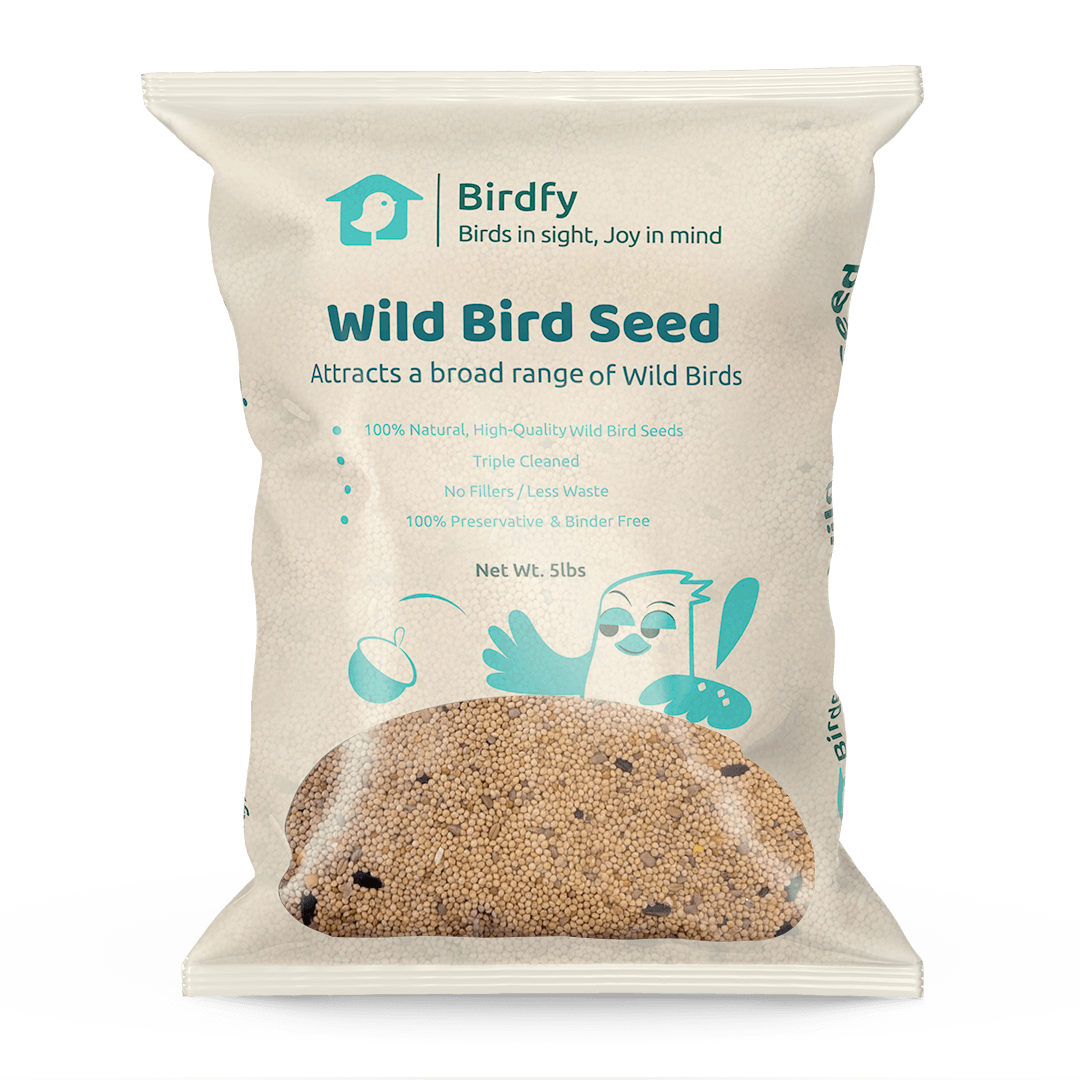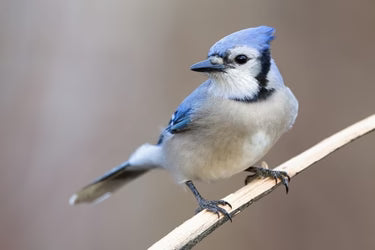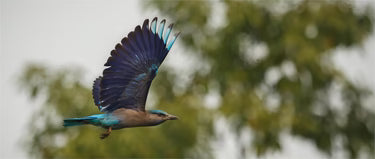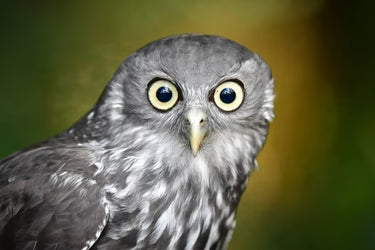
8% Off
Most Liked Blogs
Blogs
All
Backyard Birds
Beginner Instructions
Bird Bath
Bird Behaviors
Bird Feed
Bird Feeder
Bird House
Bird Lover
Bird Mate
Bird Protection
Bird Watching
Birder Blog Series
Birder Story
Birdfy
Birdfy 2
Birds Net
Expert Insights
Fun Facts
Garden Bird
How to Attract Birds
how-to
Hummingbird
Hummingbird Feeder
Identify Birds
Migration
North America
Seasons
solar panel
Squirrels Prevention
tips
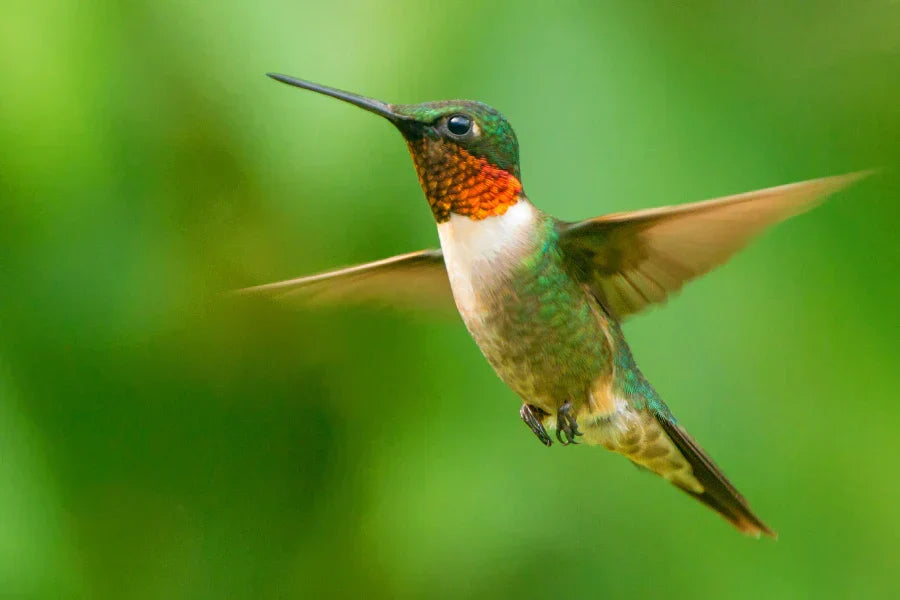
Migration of Ruby-throated Hummingbirds: To Breeding Grounds and Back
| By Matthew Young
As we all know and have witnessed, Hummingbirds are amazing flyers having the ability to fly backward, sideways, and hover in place. They also undertake impressive migrations, with some species like the Ruby-throated Hummingbird traveling thousands of miles between the breeding and wintering grounds. In spring and fall they prepare for these journeys by doubling their body weight in fat reserves.
Why do Ruby-throated Hummingbirds Migrate to North America?
Hummingbirds originated and rapidly diversified in South America, creating significant competition for food and territory among the hundreds of species. By migrating north, certain species like the Ruby-throated Hummingbird gained access to an unoccupied ecological niche (i.e. habitat) that had cooler temperatures with less competition for food.
In short, they travel here to maximize the May-August period when plants bloom and spiders are abundant -- Nectar from flowers, and spiders’ make-up much of their diet.
These amazing bundles of energy navigate using a combination of the sun's position, Earth's magnetic field, and visual landmarks. They can even migrate at night across the Gulf of Mexico for many hours if needed.
Here's a more detailed look at Ruby-throated Hummingbird migration:
Spring Migration
The spring migration for Ruby-throated Hummingbirds begins in late February or early March in Central America and Mexico, with males arriving on the U.S. Gulf Coast in mid to late March and reaching northern breeding grounds by late May. They mainly fly by day, covering up to 500 miles over the Gulf of Mexico or following coastal routes, and rely on available nectar sources and insects. This journey is spurred by increasing daylight hours, with birds gaining weight and eating insects and spiders to fuel the demanding trip.
Here is a popular migration timing map below for the Ruby-throated Hummingbird’s Spring migration:
Things to Know for When They Arrive on Breeding Grounds
1. How long does it take for hummingbirds to come to feeder?
It can take a few minutes to days to even years before hummingbirds find your feeders.
2. Do the same hummingbirds visit my feeders every year?
Hummingbirds are known for their site loyalty and will return to a familiar, successful location!
Research shows that hummingbirds have a long-term memory and can remember the locations of reliable food sources, like your feeders, even after migrating thousands of miles…so yes, some individual hummingbirds do return to the same yard and feeders year after year, with banding studies providing evidence of this long-term memory and navigational ability. While their return is not a guarantee, hummingbirds that find successful stopover sites, like your yard, are more likely to do so, especially if the food sources or plants remain consistent. You can increase your chances of seeing returning hummingbirds by keeping your feeders up and maintaining your yard with nectar-producing plants, which provides important rest and refueling stops along their journey.
3. Why Do They Sometimes Disappear from your Feeders?
Hummingbirds can take off from feeders because of territorial instincts, a constant need for food due to their high metabolism, predators, or to avoid contaminated nectar. They are naturally aggressive about guarding food sources, and so an aggressive individual, especially aggressive males, can lead to other individuals fleeing. If the nectar has gone bad or been contaminated, they can also take off from your yard. Nearby predators can also cause them to vacate your feeder area. And sometimes during peak breeding the females can be busy tending to young more and visiting native plants than at feeders.
So be sure to keep your feeders free from bacteria, mold, or fungus, which can make hummingbirds sick or deter them. Keep nectar fresh as nectar can spoil quickly, especially in hot weather, and hummingbirds will avoid feeders with bad-tasting or spoiled nectar. Also be sure to keep the feeders as free as possible from ants by using feeders with an ant-moat filled with plain water.
4. What to Do If You Don’t See Hummingbird and How You Can Encourage Their Return and Stay
Keep your feeders clean, up, and full, especially during spring migration!
Plant Hummingbird-Friendly Flowers, especially local natives. Nectar-producing plants provide a crucial food source and can help hummingbirds find your yard.
Some of the species the Ruby-throated Hummingbird especially likes are Bee Balm, Cardinal Flower, Trumpet Honeysuckle, and Trumpet Vine.
Don’t use pesticides anywhere near hummingbirds. They need to eat insects to survive.
Observe and be patient – As stated above, it may take time for hummingbirds to find and return to your feeder.
Fall Migration
In the fall, Ruby-throated Hummingbirds migrate from their summer breeding grounds in the eastern U.S. and Canada to wintering grounds in Mexico and Central America, with a significant portion crossing the Gulf of Mexico to reach the Yucatan Peninsula. Some gather in states like Florida, Louisiana, and Texas before their Gulf crossing and some may take an overland route through Mexico. The Gulf crossing journey is around 600 miles with no place to rest! A truly amazing feat for such a small bird.
You can view detailed, year-specific maps on the Journey North website. The percentage of this species' population that uses trans-Gulf versus circum-Gulf routes is largely unknown but is an area in need of study.
Departure
Some male Ruby-throated Hummingbirds are thought to leave their breeding grounds in the eastern United States and Canada in early August with males departing first, followed by females and then the young birds. Peak migration is however the first few weeks of September, but unlike spring migration, their fall migration for some individuals can stretch out across a much longer period with some of the last birds not leaving the United States until early November. Some will even winter at the southern tip of Florida and along the gulf coast to Texas. A few have even been noted to winter as far north as South Carolina.
Fat Reserves
They double their weight for their journey as they in engage in a feeding frenzy called hyperphagia, storing the extra fat as a crucial energy reserve.
Wintering Grounds
The vast majority of these hummingbirds’ winter in Mexico and Central America, as far south as Costa Rica or Panama
Challenges in the Migration of Ruby-Throated Hummingbirds
Predators: Hummingbirds face threats from various predators during migration.
Weather: Extreme weather conditions, such as strong winds, can pose significant challenges.
Fatigue: Long flights, especially over water, can lead to exhaustion.
Navigational Challenges: They rely on their internal compass and landmarks to navigate, and any disruptions to these cues can be detrimental.
Climate Change: Altered weather patterns and food availability due to climate change can disrupt migration routes and breeding cycles.
How to Help Ruby-Throated Hummingbirds During Migration
Create a Stopover Site! A yard with feeders, native plants, and perching spots acts as a vital stopover or "hotel" on their journey, making it an attractive place for them to rest and refuel.
Provide food: Hummingbird feeders are helpful, especially during migration, to refuel these birds.
Leave feeders up: It's best to leave feeders up until 2 weeks after you've seen the last hummingbird, as they may still need them to replenish energy reserves. You will be helping stragglers that are North of you.
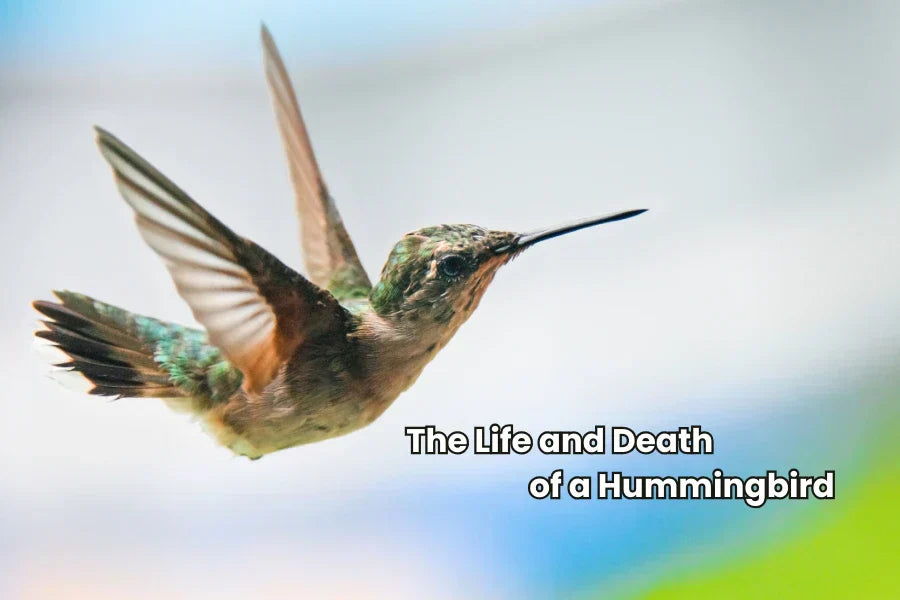
Hummingbird Lifespan Comprehensive Analysis: Understanding Their Life and Death
The hummingbird, a jewel of the avian world, captivates observers with its iridescent plumage, astonishing aerial acrobatics, and incredibly rapid metabolism. This very metabolic frenzy, which defines their existence, also makes their survival a daily struggle against the odds. Consequently, the topic of their life expectancy is a fascinating study in resilience, biology, and environmental pressure.
Average Life Expectancy of Hummingbirds
For such a fragile-looking creature, the average life expectancy is surprisingly variable but generally short. The typical wild hummingbird has an average lifespan of between 3 to 5 years. However, this average is heavily skewed by high mortality rates in the first year of life. It is estimated that a staggering 80-90% of hummingbirds do not survive their first year, succumbing to predators, starvation, disease, or accidents.
Those individuals that navigate the perilous journey from hatchling to adulthood possess a significantly improved chance of a longer life. A hummingbird that survives its first migration and first winter has a much higher probability of living for 3, 5, or even more years. This dichotomy between high juvenile mortality and relatively hardy adults is a common survival strategy in the animal kingdom, ensuring that only the fittest individuals pass on their genes.
Factors Influencing Hummingbird Lifespan
A hummingbird's lifespan is not predetermined; it is a complex interplay of numerous factors:
Predation: This is a primary cause of mortality, especially for eggs and fledglings. Common predators include larger birds (jays, hawks, owls), snakes, lizards, squirrels, and domestic cats. Outdoor cats are a significant anthropogenic (human-caused) threat.
Starvation and Energy Management: A hummingbird's metabolism is the fastest of any warm-blooded animal. They live on the brink of starvation, needing to consume more than their body weight in nectar each day, supplemented with insects for protein. Any disruption in food availability—a sudden frost, drought, or competition—can be fatal. Their ability to enter torpor, a state of deep, hibernation-like sleep where their metabolic rate drops by up to 95%, is a critical survival adaptation for conserving energy overnight or during cold spells.
Disease and Parasites: Hummingbirds are susceptible to various ailments, including fungal infections like candidiasis (often from dirty feeders), avian pox, and parasitic infestations. Mites and parasites can weaken a bird, making it more vulnerable to other threats.
Environmental Hazards and Accidents:
Windows: Collisions with glass windows are a major cause of death and injury.
Weather: Severe storms, hurricanes (which can blow migrants off course), and early freezes are deadly.
Pesticides: The use of insecticides reduces their vital insect prey and can directly poison the birds. Herbicides can kill the flowering plants they depend on for nectar.
Migration: The incredible long-distance migrations undertaken by many species (e.g., Ruby-throated Hummingbirds flying 500+ miles non-stop across the Gulf of Mexico) are extremely hazardous endeavors. Exhaustion, lack of food, and adverse weather during migration claim countless lives.
Human-Related Factors: Beyond cats and windows, hazards include entanglement in spider webs (which can trap small birds), poisoning from contaminated sugar water (fermented or with incorrect sugar ratios), and habitat destruction.
Lifespan by Species: A Comparative Table
While data is difficult to gather for all 360+ species, banding studies have provided insights into the longevity of several common types.
Species Name
Typical Average Lifespan (Wild)
Notable Longevity Record (Banded Wild Bird)
Ruby-throated Hummingbird(Archilochus colubris)
3-5 years
9 years, 2 months
Black-chinned Hummingbird(Archilochus alexandri)
3-5 years
11 years, 2 months
Anna's Hummingbird(Calypte anna)
4-6 years
8 years, 2 months (One unverified report of 12+ years)
Rufous Hummingbird (Selasphorus rufus)
3-5 years
8 years, 11 months
Broad-tailed Hummingbird(Selasphorus platycercus)
4-5 years
12 years (This is the oldest reliably recorded wild hummingbird)
Calliope Hummingbird(Selasphorus calliope)
3-4 years
8 years, 11 months
Magnificent Hummingbird(Eugenes fulgens)
5-7 years
Data limited, but likely similar to other longer-lived species
Note: Lifespans in captivity, with constant access to food and protection from predators and disease, can be significantly longer, often reaching 10+ years.
The Record Holder: The Longest-Lived Hummingbird
According to data from the Bird Banding Laboratory, the title of the oldest known wild hummingbird belongs to a female Broad-tailed Hummingbird. She was first banded in Colorado in 1976 as an adult (at least one year old) and was recaptured and rereleased by the same bander in 1987, making her at least 12 years old. This remarkable record highlights the potential longevity of these tiny creatures when they successfully avoid the myriad threats they face.
How Do Hummingbirds Die: The End of the Cycle
A hummingbird's death is rarely from "old age" in a peaceful sense. They typically die from the cumulative pressures of the factors listed above.
Predation: The most common end, fulfilling their role in the food web.
Starvation: This can happen quickly, often within hours during cold weather if they cannot find food or enter torpor in time.
Exhaustion: Particularly during migration, a bird may simply expend its last energy reserves and be unable to continue.
Disease: A weakened immune system can lead to a rapid decline.
Trauma: Fatal injuries from window strikes or other accidents.
Their small bodies decompose quickly, leaving little trace, which is why finding a deceased hummingbird is relatively uncommon.
Survival Without Food: A Race Against Time
Given their extreme metabolism, a hummingbird's time without food is brutally limited. The question of survival is measured in hours, not days. So, if you search "How long do hummingbirds live without food?" The answer is:
1. During Active Daytime: A hummingbird may begin to starve within 3 to 5 hours if it cannot find food. Their energy reserves are burned through at an astonishing rate to power their flight muscles, which beat 50-80 times per second, and their heart, which can beat over 1,200 times per minute.
2. Overnight (Without Torpor): If a hummingbird is unable to enter torpor at night (due to energy deficiency or other reasons), it will likely not survive the night. Its normal nighttime metabolic rate, while lower than daytime, is still too high to sustain without recent caloric intake.
3. Overnight (With Torpor): Torpor is their ultimate lifeline. By drastically lowering their body temperature and metabolic rate, a hummingbird in torpor can survive an overnight fast of 8-12 hours and even endure cool temperatures. However, upon waking, they are vulnerable and stiff and must immediately find food to "refuel" and raise their body temperature back to normal (around 104°F or 40°C). If they cannot find food within an hour or two of waking, they will perish.
4. In a worst-case scenario, a hummingbird deprived of all food would likely succumb in less than 24 hours, emphasizing the constant, life-or-death urgency of their foraging behavior.
How We Can Help Hummingbirds
While we cannot change the hummingbird’s demanding biology, we can make survival a little easier for them. One of the simplest yet most impactful ways is by providing a steady source of nectar. A Birdfy Hummingbird Feeder ensures that hummingbirds always have access to the food they desperately need, especially during critical times like migration or early mornings after torpor. By setting up a Birdfy Hum feeder in your garden or backyard, you give these fragile creatures a reliable lifeline—an act of support well within our reach.
Birdfy Hum Feeder Duo
The world’s first dual-cam hummingbird feeder!
Birdfy Hum Feeder
Marvel at the stunning captures of hummingbirds in their best light.
Conclusion
The life of a hummingbird is a breathtaking paradox: immense biological power and fragility existing in a single, tiny frame. Their life expectancy, while averaging just 3 to 5 years, is a testament to their incredible evolutionary adaptations, most notably torpor and migration. Their existence is a relentless race for nectar, a constant evasion of danger, and a demonstration of nature's tenacity. The record-setting Broad-tailed Hummingbird that lived for 12 years represents the pinnacle of this success story. Ultimately, understanding the factors that influence their lifespan—from predation and starvation to human-made threats—allows us to appreciate their struggle more deeply and underscores the importance of conservation efforts, such as planting native flowers, maintaining clean feeders, and keeping cats indoors, to help these remarkable birds thrive.
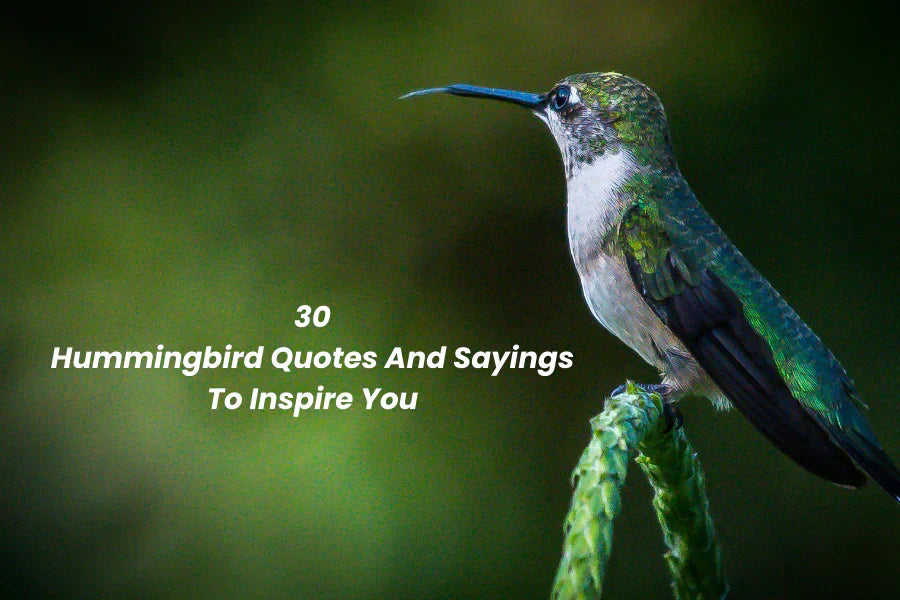
30 Hummingbird Quotes and Sayings To Inspire You
Explore the huge collection of hummingbird quotes including uplifting, cute, short, inspirational, love and hummingbird poetry, to bring joy and knowledge to your soul.
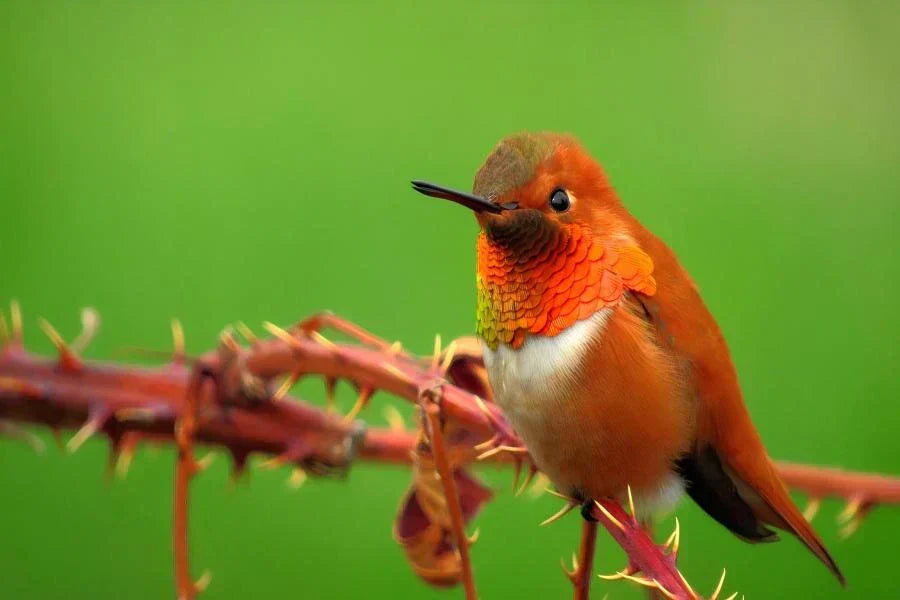
Hummingbirds are in Need of Conservation Efforts
| By Matthew Young
Introduction
Hummingbirds are beloved birds across the globe with field guides and organizations dedication to the study, research and conservation of them. Hummingbird conservation mainly needs to focus on protection of habitat, including habitat restoration and management of invasives, reducing threats from climate-change, and promoting responsible gardening practices. Nearly all species of hummingbirds face habitat loss and degradation on their breeding grounds and perhaps most importantly, on their nectar corridors during migration as millions of acres of vegetation continue to be lost to large agriculture operations, logging and urban development.
Forests are the primary habitats for the majority of our hummingbird species and these woodlands have the highest number of at-risk hummingbird species. Modification of hummingbird habitats continues to increase and will likely continue to change the distribution and viability of hummingbird populations.
Across the globe, The International Union for Conservation of Nature (IUCN) Red List identifies 57 hummingbird species facing conservation concerns, including those classified as Near Threatened (NT), Vulnerable (VU), Endangered (EN), and Critically Endangered (CR). Some examples of at-risk hummingbird species that utilize woodlands include the Mexican Woodnymph in Mexico, and the Rufous Hummingbird, which breeds in areas like the Pacific Northwest, including forested zones west of the Cascade Mountain Range. Rufous Hummingbird populations have been declining, potentially due to forest management practices and climate change. For many of these listed species, nests are undescribed for approximately 60% of them. Additionally, the physiology of hummingbirds during reproduction is almost completely unknown and habitat requirements for all life phases are not fully understood for most species.
Trend date for many hummingbird species in the United States and Canada are insufficient or non-existent. Existing long-term population trend data are considered adequate for only 4 of the 16 species that regularly breed in the US and Canada. To maintain thriving hummingbird populations, it is important to understand (1) trends in hummingbird distribution, abundance, and movement patterns; (2) population dynamics, such as survivorship, productivity, and other demographic factors; (3) the effects of broader resource changes on hummingbirds; and (4) emerging threats or problems.
Species in United States and Canada with Changing Populations
The Rufous hummingbird is experiencing the most significant population decline among North American hummingbird species. It's one of 70 bird species whose populations have dropped by at least 50% in the past 50 years, with some estimating the declines at roughly 2% per year. It is one of the species on the "Tipping Point" list, indicating a high risk of further decline.
Other declining species and factors leading to declines:Broad-tailed, Allen's, and Black-chinned hummingbirds are also experiencing population declines. Factors leading to the decline of these four species are believed to be habitat loss, climate change, and the potential mismatch between hummingbird migration and plant phenology are all likely contributing to these population drops, reports the Western Hummingbird Partnership.
Species experiencing growth:While many species are declining, one species, the Anna’s Hummingbird, once mainly just a bird of California, has increased in population and range, now ranging to Washington and British Columbia.
A More Detailed Look at Hummingbird Conservation Needs and Specific Actions People Can Take
1. Identify and Protect Critical Habitats and Corridors:
Hummingbirds rely on specific habitats for food, nesting, and migration stopovers. Protecting these areas, including forests, meadows, and wetlands, is crucial.
Replanting native trees and plants can create or restore nectar corridors, providing essential food sources for hummingbirds.
2. Create Hummingbird-Friendly Gardens: Provide Feeders and Fresh Water:
Protect Native Nectar Plants! Research which native plants attract hummingbirds in your area and incorporate them into your garden. Offer a shallow dish of water for drinking and bathing and clean it regularly. Pick a couple feeders they like and of course maintain natural nectar sources.
3. Control Invasive Species:
Invasive plants can outcompete native nectar plants, reducing food sources for hummingbirds. Managing invasive species helps restore ecological balance.
4. Reduce Pesticide Use:
Pesticides can harm hummingbirds directly or indirectly by reducing their insect prey.
5. Prevent Bird-Window collisions:
Use window decals, screens, or other visual deterrents to prevent hummingbirds from colliding with windows.
6. Reduce Light Pollution:
Bright outdoor lights can disorient migrating hummingbirds. Turning off or dimming lights at night can help them navigate safely.
7. Support Organizations:
Organizations like the Hummingbird Monitoring Network, International Hummingbird Society, Hummingbird Conservation Networks and The Western Hummingbird Partnerships are dedicated to hummingbird conservation. Supporting their work through donations or volunteer efforts is valuable.
8. Educate Others:
Spreading awareness about the importance of hummingbirds and the threats they face can encourage others to take action.
9. Advocate for Policies:
Support legislation and policies that protect hummingbird habitats and address climate change.
10. Keep Cats indoors
Cats are a significant predator of birds, including hummingbirds.
By taking these steps, individuals and communities can contribute to the conservation of hummingbirds and ensure their survival for future generations! And remember, put up Netvue-Birdfy Hummingbird feeders and enjoy the hummingbirds wherever you live!
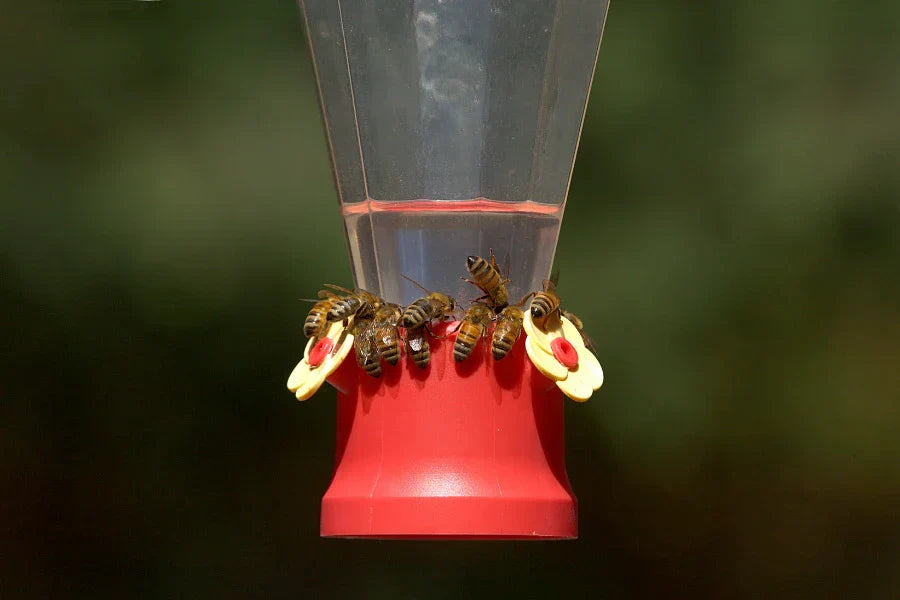
How to keep bees away from hummingbird feeders
Hummingbirds bring delight and color to our backyards, but that delight can quickly fade when bees and wasps take over the feeder. While these buzzing insects play an important role in pollination, they can become aggressive competitors, often driving hummingbirds away from their nectar.
The good news is, there are safe and effective ways to keep bees at bay without harming them or your hummingbirds. In this guide, we’ll walk you through 8 simple tips to keep bees away from hummingbird feeders.
Method 1: Use Bee Proof Hummingbird Feeder
Difficulty: ⭐️
The simplest and most initial option is to select a hummingbird feeder that keeps bees and wasps away. Bee Proof Hummingbird Feeders are designed in such a way that they feature in-built bee guards that ensure that insects are unable to reach the nectar, but hummingbirds feed readily.
Bee Proof Hummingbird Feeder Select Tips:
Red color: Hummingbirds are naturally drawn to red, while bees are less attracted to it.
Avoid feeders with yellow or white: these colors are more appealing to bees.
Use saucer-shaped feeders: These feeders have shallow nectar reservoirs that make it difficult for bees and wasps to reach the nectar.
Install nectar guards: Nectar guards are small plastic barriers or mesh screens that fit over the feeding ports. They help block insects while still allowing hummingbirds to feed comfortably.
Choose leak-proof feeders: Bees are drawn to any spilled nectar around the feeder.
This basic upgrade is the one you may require if you have only started to notice hummingbirds in your garden.
Method 2: Regularly Move the Hummingbird Feeder
Difficulty: ⭐️
Bees are great at finding food, but they dislike changes. Do you keep your bird feeder in one place? Then, change its location regularly. 5-10 shifts are enough per month to disorient bees and decrease their traffic.
Why it Works:
Bees are very dependent on scent trails and landmarks.
As hummingbirds are cleverer and more persistent, they will soon find a new site.
This method is most effective when used in combination with other strategies, such as bee guards or shady sites.
Method 3: Put Hummingbird Feeder in the Shade
Difficulty: ⭐️
Wasps and bees love sunny locations. But, hummingbirds can locate feeders even in the shade. Sunny places cause nectar to ferment more quickly and may increase the number of insects. So, the best place is a shaded or partially shaded area.
Instructions:
Place your bird feeder under a tree or a roofed porch.
Keep it out of direct sun, especially at the hottest time of the day.
It will make your feeder less appealing to bees because you want to minimize their visibility and warmth.
Method 4: Keep the Feeder Clean and Drip-Free
Difficulty: ⭐️⭐️
Sticky spills and drips attract bees, ants, and other nuisances like magnets. A well-cleaned feeder will keep insects away.
Cleaning Tips:
Clean the hummingbird feeder with a wet cloth every day.
Clean it with hot water after 2 -3 days.
Don’t use strong chemicals that are harmful to birds.
Feeder cleaning plays a crucial role in bee management and the well-being of hummingbirds.
Method 5: Provide a Water Source for Bees
Difficulty: ⭐️
Make a bee/creature watering station with shallow vessels and fresh plain water with rocks or stones for them to land on. Avoid marbles and glass stones- as those are like tiny magnifying glasses and really heat up the water quicker if in the sun. Marbles and glass stones also get slippery when wet. Rocks and natural stones have texture that is safer. Refill and refresh this daily please.
Never feed bees bowls of sugar water. These things are harmful because they do not exist in the wild and the bees don’t know how to interact with them- they can get mired down and drown or they can get drunk when those concoctions ferment. That’s doing more harm than good. Let the bee keepers decide when to feed their bees in the safe manner they employ to do so.
Method 6: Put Bee Guards on Hummingbird Feeder
Difficulty: ⭐️⭐️
Bee guards are small plastic or rubber plugs that fit over the feeders but do not prevent hummingbirds from feeding. They are available on many newer feeders, but you can buy aftermarket guards for older feeders. These guards mechanically safeguard, and bees and wasps can’t reach the nectar.
DIY Option:
Put fine netting, such as tulle or cheesecloth, over the feeder area.
Ensure that the space is large enough to allow the beak of a hummingbird to stick through.
It works well. Bee Guards or Mesh Barriers are easy to put on and take off for cleaning.
Method 7: Switch to Hummingbird-Friendly Plants
Difficulty: ⭐️⭐️⭐️⭐️
One of the long-term solutions to bee problems is the planting of hummingbird-friendly flowers, which will naturally offer nectar. Plantings such as bee balm, salvia, columbine, and trumpet vine will draw hummingbirds and decrease dependence on feeders, which can also attract bees.
Planting Success Tips:
Select natives, nectar-producing plants
Do cluster plants together to be seen
Choose red, tube-shaped flowers (hummingbird favorites)
Do not use double-bloom hybrids (low nectar)
It is a time-consuming and planning-intensive approach, resulting in a balanced garden that is sustainable in pollination.
Method 8: Create a Pollinator-Friendly Garden
Difficulty: ⭐️⭐️⭐️⭐️⭐️
Sometimes, the best way to deal with bees at your hummingbird feeder is not to fight them, but to give them their own space. By planting a pollinator garden nearby, you can offer bees and other beneficial insects an alternative nectar source, helping to ease the competition at your feeder.
Food and Agriculture Organization of the United Nations research shows that over 80% of flowering plants rely on pollinators like bees to reproduce, and around 70 of the top 100 human food crops are pollinated by bees.
Try planting nectar-rich flowers such as zinnias, petunias, black-eyed Susans, sunflowers, and bee balm. Just keep in mind that bees are especially drawn to yellow blooms, so you may want to place these plants farther from your feeder.
Enjoy Every Visit With Birdfy Hum Feeder
The Birdfy Hum feeder not only provides protection against ants but also effectively reduces bee disturbances through scientific design. It features special bee-proof structures, such as tightly sealed nectar ports and leak-proof designs, which prevent sweet nectar from spilling and attracting bees and other insects.
More importantly, Birdfy Hum Feeder gives you a clear view of what’s happening — anytime, from anywhere. With one or two built-in HD cameras, you can spot leaks early, check if bees are approaching, and enjoy up-close views of your hummingbirds without stepping outside. For many backyard bird lovers, it’s a wonderful way to stay connected with nature, effortlessly and peacefully.
Birdfy Hum Feeder Duo
The world’s first dual-cam hummingbird feeder!
Birdfy Hum Feeder
Marvel at the stunning captures of hummingbirds in their best light.
The Spiritual Aspect: Bees, Birds, and Balance
Although determining how to prevent bees on the hummingbird feeder can feel like a war, take into consideration that both bees and hummingbirds play crucial ecological roles. Bees are pollinators, and hummingbirds are both pollinators and pest eaters. The point is not to kill bees but to have a harmonious garden where every species can feel comfortable.
Conclusion
Our ecology depends on both bees and hummingbirds, and a balance that benefits both is intended. It will take some patience and planning, but with a little effort, you can watch the frenzy of hummingbirds at your feeder and send bees on their way in a respectful manner. Whether it is figuring out how to keep bees away from hummingbird feeder setups or how to get bees off hummingbird feeders, these 8 methods will provide an extensive guide.
But the most important thing is to be consistent. Adhere to the selected practices, monitor outcomes, and adjust as needed. You will gradually have a backyard oasis with no bees and lots of hummingbirds.

Do Hummingbirds Mate for Life? The Surprising Truth About Their Love Lives
Do hummingbirds mate for life? To answer this query, we must delve into the complex mating behaviors, reproductive strategies, and social structures of hummingbirds.
Show
per page



